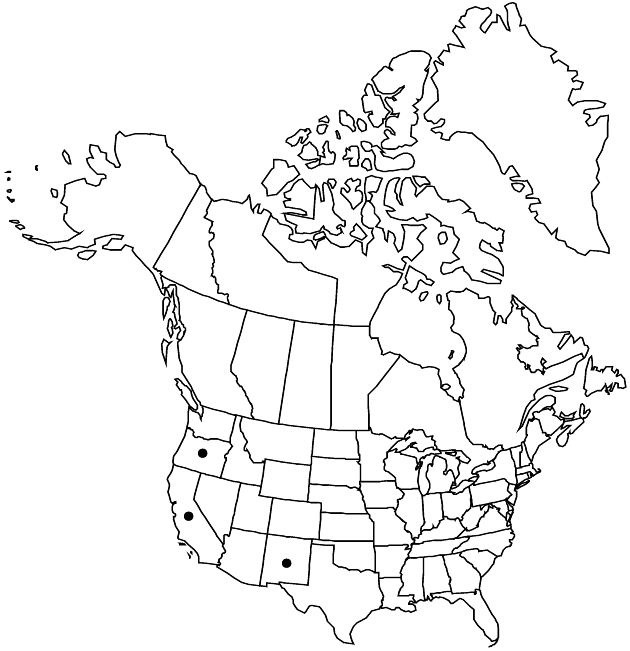Baccharis pilularis
in A. P. de Candolle and A. L. P. P. de Candolle, Prodr. 5: 407. 1836.
Shrubs, 15–450 cm (prostrate and mat-forming to erect and rounded, much branched). Stems spreading to ascending, dark-brown, shiny, striate-angular, glabrous, often ± scurfy, usually resinous and sticky. Leaves present at flowering; sessile or short-petiolate; blades (1-nerved or 3-nerved) oblanceolate to obovate, the smaller 5–40 × 2–15 mm (thick), bases cuneate, margins entire or coarsely dentate (teeth 3–9 distal to middles), faces glabrous, gland-dotted, resinous. Heads (100–200+) in (leafy) paniculiform arrays. Involucres hemispheric to campanulate; staminate 3.2–5 mm, pistillate 3–6 mm. Phyllaries ovate to lanceolate, 1–3 mm, margins yellowish, scarious, medians yellow proximally, green distally, apices obtuse to acute or acuminate (erose, abaxial faces papillose-scurfy). Staminate florets 20–34, 3–4 mm. Pistillate florets 19–43; corollas 2.5–3.5 mm. Cypselae 1–2 mm, 8–10-nerved, glabrous; pappi 6–9 mm.
Distribution

Calif., N.Mex., Oreg., nw Mexico
Discussion
Subspecies 2 (2 in the flora).
Baccharis pilularis can be distinguished by its dark brown stems, and serrate, obovate to oblanceolate leaves. In addition, plants from some dunes of the California coast are prostrate, a growth form unique to this genus in our region.
The common, weedy, widespread form is subsp. consanguinea, which is typically erect, with its larger leaves 15–40 mm. Subspecies pilularis is known only from exposed sandy dunes and bluffs along the central coast of California. Its growth habit is matlike, and its larger leaves are 5–15 mm. The prostrate habit of subsp. pilularis is strikingly different from the upright habit of subsp. consanguinea.
C. B. Wolf (1935) demonstrated that in at least some populations, the distinction between prostrate and erect forms has a genetic basis. Transplants from the wild of the prostrate and erect forms retained their respective growth habits when grown together in a sheltered location and the morphology of seedlings reflected the habit of the parents. Wolf’s arguments for recognizing the forms as subspecies are further supported by the existence of prostrate cultivars in the horticultural trade. On the other hand, both erect and prostrate forms grow in proximity throughout the range of subsp. pilularis. In many areas the forms intergrade completely; in others they can be easily distinguished. Two subspecies are recognized here, notwithstanding difficulties in identifying habit from pressed specimens, or by observations of populations where both growth forms coexist. Further study is needed, perhaps utilizing molecular characters and detailed observations of native populations.
Selected References
Key
| 1 | Stems erect, rarely prostrate, brittle, forming erect or rounded shrubs; leaves mostly 15–40 mm; noncoastal and coastal California, Oregon | Baccharis pilularis subsp. consanguinea |
| 1 | Stems prostrate, flexible, forming mats; leaves mostly 5–15 mm; sandy, exposed habitats of coastal California | Baccharis pilularis subsp. pilularis |